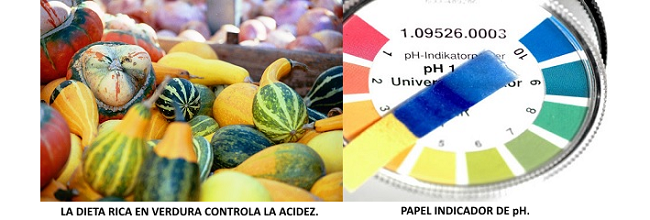
En Ok Pool Reform, in this section within the Swimming pool pH level we will treat the Balance of pH values in the human body.
Balance of pH values in the human body

What does the pH value mean for the human body?
The pH is a scale designed to measure the alkalinity or acidity of a substance, and it indicates the percentage of hydrogen contained in it.
It should be noted that the body's cells need a slightly alkaline pH (between 7 and 7,4) to function properly. Indeed, the chemist Linus Pauling, winner of two Nobel Prizes, stated that maintaining the body with an alkaline pH is key to enjoying good health.
Biological considerations of pH value

Biological consideration of pH value: Tautomeric forms of purines and pyrimidines
- Tautomerization is a special type of isomerism where a proton migrates in one direction and a covalent bond moves in the opposite direction within the molecule.
- Purine and pyrimidine bases exist in different tautomerized forms depending on pH.
- They are specific, tautomerized at the body's PH of nearly 7,4 and are essential for hydrogen bonding of complementary base pairs in DNA double helices and RNA strands. So, pH maintains the natural three-dimensional shapes of nucleic acid molecules.
Biological interest of the isoelectric pH value

- PH influences the ionization of ionizable polar groups of amino acids, proteins, nucleic acids, phospholipids and mucopolysaccharides.
- At a specific pH, called the isoelectric pH of the molecule, each molecule exists as dipolar zwitterions containing cationic and anionic acid groups and a minimum net charge.
- Zwitter ions do not migrate in electric fields and are easily precipitated by aggregation due to minimal electrostatic repulsion.
Functions associated with pH levels in the body

- To begin with, the damping systems: Proteins are part of the buffer system to regulate pH levels.
- Respiratory Control: The pH of blood under normal conditions is 7,4. However, CO2 dissociates into carbonic acid in tissues. Therefore, the presence of more CO2 makes the blood more acidic. That's why when we hold our breath for too long, CO2 levels rise in the blood, lowering our pH and causing us to faint. On the other hand, during alkalosis or increased pH, breathing may slow down to increase CO2 levels and reduce alkalinity. However, low breathing rate could also lead to low oxygen levels which could be harmful. Therefore, breathing provides an important control to regulate pH levels.
- The renal system regulates the pH of the extracellular fluid.
- On the other hand also Provides protection against bacterial infections. At an acidic pH, optimal conditions exist for the survival of normal regional flora. The germs that make it up constitute the most important defense system against pathogens of foreign origin.
- And finally, pH serves as protective against alkaline solutions against skin infections, since the skin's protective acid mantle is responsible for keeping it protected from environmental influences that could damage it. It protects the skin directly against the effects of alkaline solutions (for example, when washing with alkaline soaps, bleaches...). Indirectly, it protects against colonization by bacteria or fungi and prevents infection.
Ideal pH value for the human body

Ideal pH value in the human body
The ideal pH of the human body is 7 even though it is normally around: 7.35-7.45.
pH values of different body fluids
The physiological blood pH is between 7.35 and 7.45 with a mean value of 7.4.

A doctor evaluates a person's acid-base balance by measuring the pH and the levels of carbon dioxide (an acid) and bicarbonate (a base) in the blood.
A pH below 7.35 is an acidosis and a pH higher than 7.45 is called alkalosis.
- To avoid an imbalance between acids and bases during daily metabolism, the body has several regulatory systems.
- So, if you want information about how pH affects our physiological blood health, you can click on the following link: The balance of acids and bases in our body's body fluids is of vital importance.
Although the pH of blood ranges between 7,35 and 7,45, the pH of other body fluids is different.

- Regarding the pH of body fluids, it varies slightly between the fluids of the different compartments of the body.
- To the point that in arterial blood, the pH is 7,4, in venous blood and interstitial fluid it is 7,35, while the average cellular pH is 7,0.
- Meanwhile, in the physiology of respiration we see that venous blood contains more CO2 than arterial blood and that there is a direct correlation between CO2 and pH, so that the more CO2, lower pH. This explains the difference in pH between venous and arterial blood.
In the stomach, the pH is between 1,5 – 3. 100.000 times more acidic than in the blood.

Ideal pH value in the stomach
pH indicates the level of H+ ions, where a low pH indicates too many H+ ions and a high pH indicates too many OH- ions. If pH levels fall below 6,9, it can lead to coma. However, different body fluids have different pH values.
- Saliva pH ranges between 6,5 and 7,5. After swallowing, the food reaches the stomach where the upper and lower parts of the stomach have different pH values.
- The top has a pH of 4 to 6,5, while the bottom is very acidic with a pH of 1,5 to 4,0.
- It then enters the intestine which is slightly alkaline, with a pH of 7-8.5. Maintaining the pH values of different regions is critical for its function.
ph of drinking water

pH and fresh water
- The human body is made up of 70 percent water. So it's no surprise that H2O plays a key role in stabilizing our natural pH level. That's one of the reasons we're always told to drink lots of water. But not just any water. Water with a pH between 7,2 and 7,8 is ideal for maintaining good health.
- When we drink liquids that are too acidic or too alkaline, they can upset the body's delicate balance, which can lead to the development of bacteria, viruses, fungi, yeast and parasites. Bottom line? Choose your water wisely and drink plenty.
drinking water ph value: 6.5 to 8.5
- El pH acceptable for drinking water varies between 6.5 to 8.5 as a guide value (Jimenez, 2001). According to Galvin (2003), for the waters For human consumption, extreme values can cause irritation of the mucous membranes, irritation of internal organs and even ulceration processes.
ph demineralized water
ph value of distilled water

- Pure water, by definition, is slightly acidic and distilled water will have a pH of around 5,8. The reason is that distilled water dissolves carbon dioxide from the air.
- It dissolves carbon dioxide until it is in dynamic equilibrium with the atmosphere. 4.5-5.0 The maximum purity of such stills is usually 1.0 MWcm; and since there is no protection from carbon dioxide (CO2) dissolving in the distillate, the pH is generally 4.5-5.0.
Impact pH value balance
The acid-base balance of the pH level in the body

The regulation of the acid-base balance, that is, the pH, is vital for the body.
Enzymes and biochemical processes function optimally only within a specific pH range, thus destroying some enzymes if the acid-base level in the body fluids is not normal.
Alkaline human body pH

Importance of pH balance: maintaining a pH above 7 or alkaline is the best guarantee of health.
ph health normal values

- Our bodies live and die at the cellular level and cells must maintain alkalinity in order to function and stay alive. An acidic state causes a lack of oxygen at the cellular level.
.
Importance of pH in health
Magnitude ph and health
Subsequently, a brief explanation of the concept of hydrogen potential and its importance for health.
Health disorders pH imbalances normal values

The balance of acids and bases in our body's body fluids is of vital importance.
- An imbalance can cause acidosis (excess acidity) or alkalosis (excess basicity) in our body, metabolic disorders, which are characterized by symptoms that without treatment can have serious consequences.
- Additionally, the formation and growth of pathogens in foods requires nutrients, water, adequate temperature, and certain pH levels. The pH values in foods range from 1 to 14, and 7 is considered a neutral value. If the pH level in a food is greater than 7, it is said to be alkaline; On the other hand, a value less than 7 indicates an acidic food.

A pH below 7,4 is suboptimal and provides the perfect environment for the growth of bacteria, mold, and viruses.
Acidosis: Impacts pH values less than 7,4 on the human body
Acidosis is a condition caused by excessive production of acid that builds up in the blood or excessive loss of bicarbonate (metabolic acidosis). Likewise, it can be caused by a buildup of carbon dioxide that results from poor lung function (respiratory acidosis).
- A low or acidic pH also causes the body to store acid in our fat cells, resulting in the production of more fat cells (the last thing we need!). So… by returning your body to the correct pH level, we are allowing our body to lose unwanted fat cells.
- Stress, lack of exercise and poor eating habits lower blood pH and can lead to diseases.
- Acidic foods are considered to have a pH below 4,6 and should be avoided, including soft drinks, processed foods, fish, sugar, grains, and processed meats.
- In fact, a low or acidic pH is one of the most important causes of many diseases, such as cancer, for example, since it has been detected that 85% of cancer patients have pH levels between 5 and 6.
Alkalosis: Imbalances pH health normal values

- Alkalosis is a condition involving excessive alkalinity of the blood caused by too much bicarbonate or loss of acid (metabolic alkalosis). It can also be caused by a low level of carbon dioxide in the blood that results from rapid or deep breathing (respiratory alkalosis). Although less common than acidosis, alkalosis also causes a pH imbalance.
pH value balance disorders health
pH imbalance normal values health
Imbalance of pH value health: disorders of acid-base balance. Metabolic and respiratory alkalosis.
